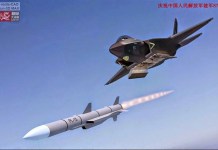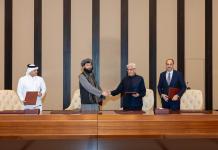US military operations such as counter-terror and intelligence gathering missions will continue in Afghanistan even after the troop pullout by September 11, according to reports.
Marine Corps Gen. Frank McKenzie, the head of US Central Command, told House Armed Services Committee that options are being drawn to keep counterterrorism forces in the region, Air Force Times reported.
The American military’s withdrawal from Afghanistan would have serious implications for South Asia’s security and stability. The countries in this region have reasons to worry about the Taliban’s commitment to the ceasefire agreement that it had signed with the US in February 2020.
Within 45 days of the signing of the truce — between March 1 and April 15, 2020, the Taliban carried out more than 4,500 attacks in Afghanistan, which showed an increase of more than 70% as compared to the same period in the previous year, according to a Reuters report.
More than 900 Afghan security forces were killed in the period, up from about 520 in the same period a year earlier. Meanwhile, because of a significant reduction in the number of offensives and airstrikes by Afghan and U.S. forces against the Taliban due to the agreement, Taliban casualties dropped to 610 in the period, down from about 1,660 in the same period a year earlier.
This record surge in the Taliban attacks has threatened the internal stability of Afghanistan, and many fear the vulnerabilities of the Afghan National Army fighting without support. Gen. Frank McKenzie told US legislators he is preparing plans to keep some troops “on-call” in the region, as quick-reaction forces and that alternatives will be forwarded to the Secretary of Defense Lloyd Austin by the end of this month.
The use of airpower and UAV/UCAVs has helped check militant activities in Afghanistan. According to McKenzie, manned or unmanned aircraft could play a key role in any remaining presence that could respond to threats inside the country.
I’m very grateful for my time with President @ashrafghani today. I came to Afghanistan to listen and learn. This visit has been very helpful for me, and it will inform my participation in the review we are undergoing here with @POTUS. pic.twitter.com/ZE39tXZqvg
— Secretary of Defense Lloyd J. Austin III (@SecDef) March 21, 2021
Long-range precision weapons, manned raids, or manned aircraft could also be used to take out a target, McKenzie said.
The General also said that despite the halt in American ground operations, Washington would respond to any threat emerging immediately. “I didn’t say we wouldn’t go back in to strike. But we’re not planning to go back in to reoccupy,” he said.
He also stressed the use of surveillance craft to gather intelligence in the region. And finding a proper place for these aircraft like Predator drones is what McKenzie is up to, and would mean either using a joint Afghan airbase or a specific American airfield in Afghanistan.
“You will have to base your overhead [intelligence, surveillance and reconnaissance assets] from no longer within Afghanistan, where an MQ-9 can take off and be over its target in a matter of minutes,” McKenzie said.
Another possibility McKenzie hinted at is about keeping the surveillance assets in a neighboring country. He said the US is sending its diplomats to neighboring countries to explore this option.
During the troop pullout, an American aircraft carrier would be present in the region to respond to any possible threats to the US military.
Defense experts talking to the EurAsian Times, who wished to stay anonymous, said that as expected, this would be a breather for India and the present Afghan government. India has invested billions of dollars in the war-ravaged nation and New Delhi has been extremely apprehensive of US pullout and losing its soft power and clout.
Afghanistan is vital for India not only because it gives them a strategic depth in Pakistan’s backyard, but it also opens up the energy-rich Central Asian market for New Delhi.
India should not be too disappointed with the US pullout, as the game is not really over, as both Washington and New Delhi would want to keep China away from the region. The US may not go anywhere, despite the official pullout, the expert noted.




